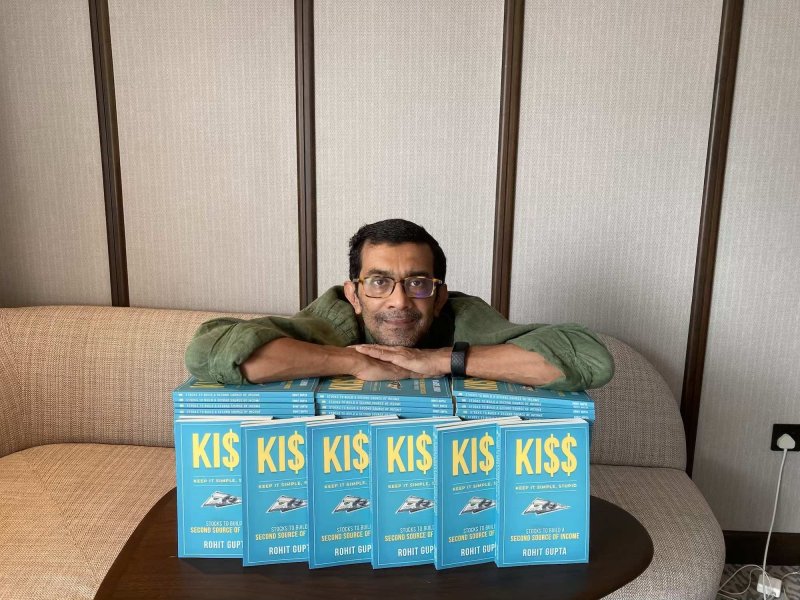Once you embark on a career and begin generating a stable source of income, there’s one thing most people will tell you to do: invest. Invest in stocks, bonds, funds, products—the list goes on.
And it can be difficult to wrap your head around the idea of investment. Giving away your hard earned money to someone else, only for it to return doubled, tripled or quadrupled? Sounds too good to be true.
Well, sometimes, it is. So it is important to learn why and how to invest properly. And this chartered accountant and banker has got some tips to help you navigate the investment market.
Meet Rohit Gupta, who has over 30 years of international experience in the financial services industry. Having lived through multiple financial crises, he has earned and learned his way around investing and generating a second source of income—one that allows him to enjoy returns without putting in the work.
Below, we speak to Gupta, to learn more about why investment is so important and how to successfully build a passive income.

Tell us a little bit about yourself.
I’m a chartered accountant and banker. I’ve been fortunate to have had the opportunity of a global career, living and working in several countries including India, Indonesia, Mexico, Turkey and Malaysia.
Outside of work, I have a passion for personal finance and education, especially when it comes to speaking to young people just in the beginning stages of their career. As very little of this subject is taught in schools, my own experience has been more of a journey. I referred to business and finance magazines and books, and have now written my own book, KI$$: Keep It Simple, Stupid—Stocks To Build A Second Source Of Income.
Tell us what inspired you to write KI$$.
I wrote this book to teach my daughter about money. Talk about a cobbler’s son having no shoes! My daughter went to an art school and while she and her friends are very talented, they are not very savvy when it comes to money. Money isn’t everything, but financial security will allow you to live life on your own terms. In today’s gig economy, it is critical to build a second source of income to do so.
Now tell us about the KI$$ approach.
KISS is a design principle by the US Navy in the 1960s, which states that systems work best if they are kept simple rather than made complicated. Simplicity should be a key goal, and unnecessary complexity should be avoided. Likewise for investment, don’t overdo anything and stick with straightforward approaches.
And why do you think people should invest?
An individual needs approximately $1 million in savings to generate $50,000 of passive income every year. This is a large sum, and savings alone will not get you there.
To save $1 million over forty years at seven percent earnings, you need to save less than $400 per month. This will equal under $200,000 over 40 years. Earnings or interest on your savings (as it grows over time) will equal more than $800,000. Of a total portfolio of $1 million, 20 percent will be from your savings and 80 percent from compound interest.
These days, there are a lot of commercials and scam-like investment opportunities. These have left a sour taste in many mouths about investment. What do you think about this?
Understanding the why is always more important than how. As the old proverb goes: Give a man a fish, and you feed him for a day. Teach a man to fish, and you feed him for a lifetime.
There are, of course, plenty of books, tutorials, calculators, and tools on personal financial planning. This may equally be a problem. The key investment concepts are very simple, and these sometimes get lost in the overflow of available financial information.
KI$$ embodies independence, thrift and self-reliance. My emphasis is on providing an understanding of foundational investment concepts necessary to help you plan, save and invest to reach your financial goals. The emphasis is not on math (or products) but on basic concepts.
Do elaborate on the idea of passive income, a subject we’re hearing a lot of these days.
There can be two types of income. First, active income is earned in exchange for your time and includes any job or self-employment. Portfolio (or passive) income is income that is not proportional to the time you physically put into acquiring it. Examples of passive income include rental income, stock dividends, and book or music royalties.
Why is investment a good source of passive income?
Over the long term, stocks have provided the highest rate of return over all other asset classes. Stocks have beaten real estate, commodities, gold, currencies, and bonds. With stocks, you participate in the growth of the global economy, which has had an upward trend over the last century. The stock market has prospered in the last hundred years, despite two world wars, bank failures, civil wars, infectious diseases, revolutions, currency devaluations, debt crises, and oil peaks. After each recession, stocks have come back stronger and higher.
Finally, if there’s one thing readers of SG Magazine and KI$$ should know about investment, what is it?
An interesting approach would be to look at it as rich millionaire vs. poor millionaire. A million dollars is a lot of money. However, if you’re not earning enough on your million-dollar portfolio to make an alternate source of income—you are in fact a poor millionaire.
Another thing to note is that saving is different from investing. A few percentage points in interest rates can mean a huge difference in your future wealth. But speculation is different from investing too. Long term wise, stocks have provided the highest rate of return over all other asset classes. Stocks have beaten real estate, commodities, gold, currencies and bonds.
Also take a total portfolio approach: The goal is not to minimise short term volatility but maximise long term returns.
KI$$: Keep It Simple, Stupid—Stocks To Build A Second Source Of Income can be purchased here.


